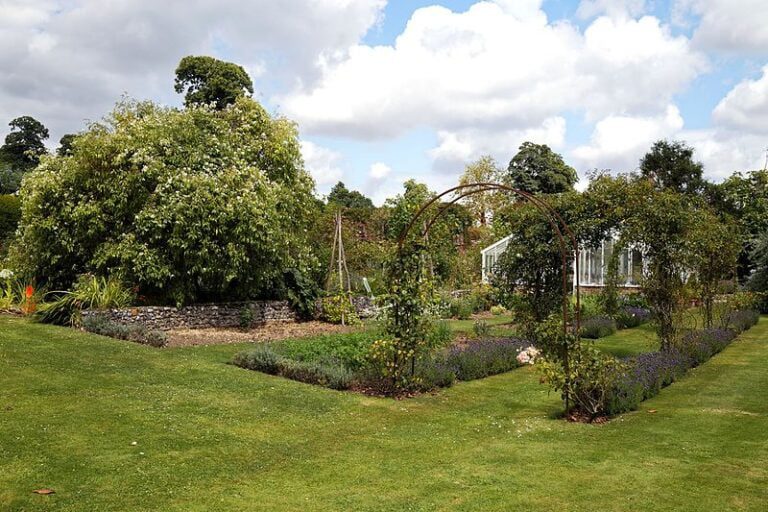10 Tips to Add Roses Into Your Perennial Garden
by Alison Hoover
Roses are beautiful, there’s no doubt about it –– but they can also be intimidating. With so many varieties, some of which are rather persnickety, it can be hard to know where to start. But, we love roses and want everyone to love them, too. Here are a few tips to help you get started adding roses to your perennial garden.
- Focus on the USDA Hardiness Zone
- Choose a type of rose plant
- Analyze sun and shade conditions
- Monitor soil properties
- Provide proper food and water
- Pair roses with existing plants
- Plant in the springtime
- Prune and deadhead
- Prepare for winter
- Keep it easy
1. Focus on the USDA Hardiness Zone

The USDA Hardiness Zone chart is the key to selecting plants for your garden, including roses.
Tacoma, for example, lies in Zone 8b which indicates the average low temps fall between 15 and 20 degrees Fahrenheit.
You’ll want to choose roses that can withstand these chilly conditions. Great options include Easy Elegance snowdrift roses and Hybrid Tea Roses, including peace and silver jubilee.
2. Choose a Type of Rose
Sometimes the hardest part about incorporating new plants in a garden is knowing which varieties to start with. There are a lot of categories of roses, but one categorization includes miniature roses, shrub roses, and climbing roses.
Miniature roses stay under 3 feet but are filled with small, bright blooms. Shrub roses are bushy and hardy, and are great for borders and mixed flower beds. Climbing roses are tall and will cover walls and trellises if given the opportunity.
3. Analyze Sun and Shade Conditions
Along with quality soil, roses need adequate sun. It’s important roses receive a minimum of 5-6 hours of direct sun each day. If possible, morning sun is best since it will help dew dry off the leaves.
In colder climates where sunlight isn’t available all year long, consider planting roses closer to a building’s foundation to help shield plants from bitter winter winds.

4. Monitor Soil Properties
Ideally, the soil will be loose and loamy, with a pH of around 6.5. The soil must drain well, so it is OK if the soil leans toward sandy. If the soil has too much clay, the water won’t drain and the roots might become waterlogged and begin to rot.
You can test soil pH with a simple test bought at the garden supply store. The results will help you know what changes to make.
5. Provide Proper Food and Water
In addition to sun and water, rose plants require other nutrients including calcium, sulfur, phosphates, and magnesium.
If you want to use artificial supplements, be sure to follow the directions properly and learn what is best for the roses you’ve chosen. If possible, use natural additives and compost when available.
6. Pair Roses with Your Existing Plants
Make sure you have at least 1 foot of space between your roses and other plants. With that in mind, roses pair well with most other plants. Placing roses alongside voluminous plants can allow the rose’s colors to pop while hiding the stems of taller varieties.
For example, lavender, salvia, and sage are low maintenance, will help your roses shine, and are hardy throughout much of the country, including the Pacific Northwest.
7. Plant in Springtime

Once you’ve chosen which varieties to plant and where, you’ll decide between purchasing bare-root plants or potted roses.
Bare-root plants should be planted as soon as the soil is workable in the spring, and you want to soak the roots for a couple of hours before doing so. With potted roses, wait until late spring to put them in the ground.
8. Prune and Deadhead
Throughout the year you should remove dead, damaged, or diseased growth; this is called deadheading and is important for promoting overall growth.
Different varieties of roses have different recommendations for pruning, so know what type of rose you planted and read up on when to prune it. Be sure to wear quality gardening gloves and use sharp pruners or loppers as appropriate.
9. Prepare Your Roses for Winter
Clean up all flower beds before winter by removing fallen leaves to protect against fungus and disease. If your garden will experience a long winter with below-freezing temps, take steps to protect your rose plants.
The best way to do this is by enclosing the plant in a cylinder or fence to protect against wind and layer the ground with 2 inches of mulch to insulate the roots.

10. Keep it Easy
Start with roses that are easy to nurture and will survive your learning curve. My personal favorites include:
- Knock Out shrub roses because they require little maintenance and boast continuous blooms.
- Flower Carpet Scarlet are ground-cover roses with continuous blooms and very little maintenance.
- Kiss Me Kate roses have a classic appearance with tall stems and large blooms.
- All The Rage roses are disease-resistant stunners with glossy leaves and bright, complex colors.
The bad news is that you’ll probably lose a rose plant or two along the way, but the good news is that you’ll also experience a lot of joy from planting and nurturing roses in your perennial garden. There’s a lot to learn about roses, but we pretty much guarantee you’ll enjoy the process.

Guest author Alison is still a Midwesterner through and through and loves to spend her time baking and reading. Always at home in the dirt as a kid, she raised vegetable gardens with her dad and flower gardens with her mom.







